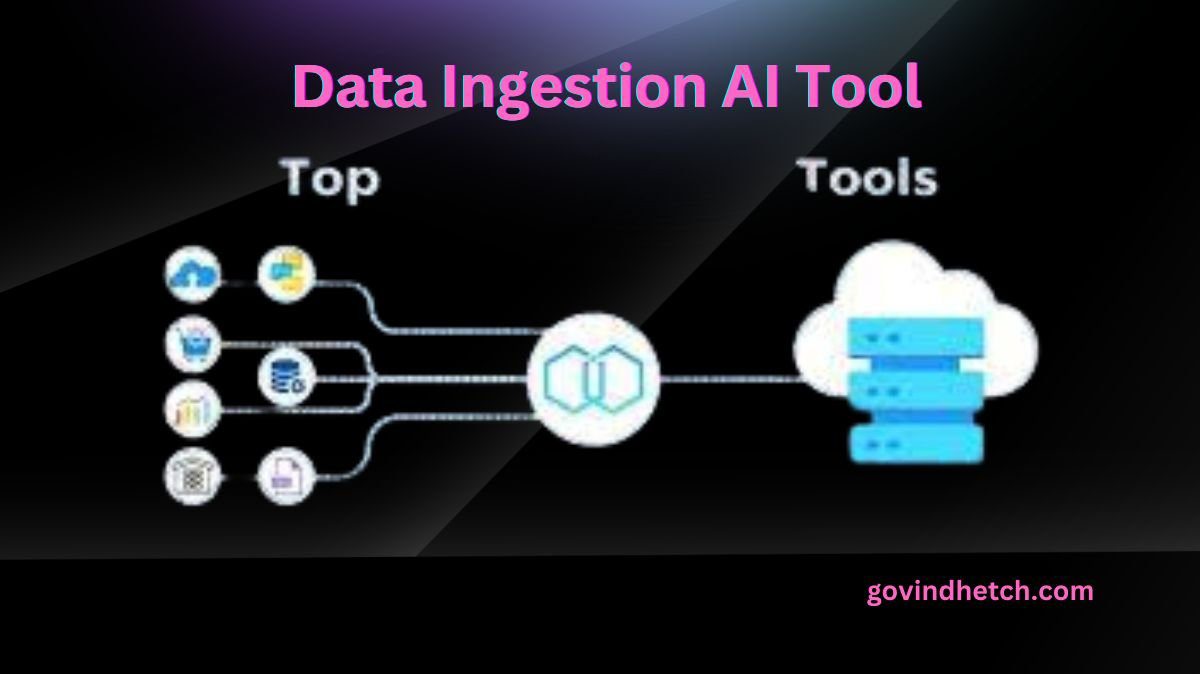Data Ingestion Methods
As generative AI gained traction, a number of well-known businesses decided to limit its application due to improper handling of confidential internal data. As they work to gain a deeper understanding of the technology, several companies have implemented internal bans on generative AI tools, and many have also prohibited the use of internal ChatGPT.
When investigating large language models (LLMs), companies still frequently take the chance of using internal data because LLMs can transform from general-purpose to domain-specific knowledge thanks to this contextual data. Data intake is the first step in the development cycle of either generative AI or conventional AI. Here, raw data customized to an organization’s needs can be gathered, preprocessed, hidden, and formatted for use with LLMs or other models. At present, there is no established procedure to address the difficulties associated with data ingestion; however, the accuracy of the model relies on it.
Four hazards of incomplete data ingestion
Creation of misinformation an LLM may produce inaccurate results when trained on contaminated data, or data containing errors or inaccuracies. This could result in poor decision-making and possible cascading problems.
Increased variance: Consistency is gauged by variance. Inadequate data can result in inconsistent responses over time or deceptive outliers, which are especially harmful to smaller data sets. A model with a high variance may be suitable for training data but not for use in real-world industry scenarios.
Restrictive data coverage and non-representative responses: When data sources are restrictive, homogeneous or contain mistaken duplicates, statistical errors like sampling bias can skew all results. This could lead to the model leaving out of the discussion entire regions, departments, populations, businesses, or sources.
Difficulties in correcting biased data: “Retraining the algorithm from scratch is the only way to retroactively remove a portion of that data if the data is biased from the start.” When answers are vectorized from unrepresentative or contaminated data, it is challenging for LLM models to unlearn them. These models frequently use previously learned responses to support their understanding.
Challenges in rectifying biased data: Data ingestion needs to be done correctly from the beginning since improper handling can result in a number of new problems. An AI model’s foundational training data is like learning to fly an aircraft. One degree off on the takeoff angle could land you on a different continent than anticipated.
The data pipelines that power generative AI are the foundation of the entire pipeline, so taking the right precautions is essential.
Four essential elements to guarantee dependable data ingestion
Data governance and quality: Ensuring the security of data sources, preserving comprehensive data, and offering unambiguous metadata are all examples of data quality. Working with fresh data through techniques like web scraping or uploading might also be necessary for this. Throughout the data lifecycle, data governance is a continuous process that helps guarantee adherence to legal requirements and business best practices.
Data integration: With the use of these tools, businesses can bring together various data sources in a safe, single location. Extract, load, and transform is a widely used technique (ELT). In an ELT system, data sets are selected from siloed warehouses, transformed and then loaded into source or target data pools. Fast and secure transformations are made possible by ELT tools like IBM DataStage, which use parallel processing engines. By 2023, the typical enterprise will be receiving hundreds of different data streams, so developing new and traditional AI models will depend heavily on accurate and efficient data transformations.
Preprocessing and data cleaning: This covers data formatting to adhere to particular data types, orchestration tools, or LLM training requirements. While image data can be stored as embedding’s, text data can be tokenized or chunked. Data integration tools can be used to perform extensive transformations. Additionally, it might be necessary to alter the data types or remove duplicates from the raw data directly.
Data storage: The problem of data storage emerges when the data has been cleaned and processed. Since most data is hosted either on-premises or in the cloud, businesses must decide where to keep their data. When handling sensitive data, such as customer, internal, or personal information, it’s crucial to exercise caution when utilizing external LLMs. On the other hand, LLMs are essential for optimizing or putting into practice a retrieval-augmented generation (RAG) based strategy. It’s crucial to execute as many data integration procedures on internal servers as you can to reduce risks. Using remote runtime options such as can be one possible solution.
With IBM, begin your data ingestion process
By combining different tools, IBM DataStage simplifies data integration and makes it simple to pull, organize, transform, and store data in a hybrid cloud environment that is required for AI training models. All levels of data practitioners can use the tool by utilizing guided custom code to access APIs or by utilizing no-code GUIs.
You now have more flexibility in running your data transformations with the DataStage as a Service Anywhere remote runtime option. It gives you unparalleled control over the parallel engine’s location and allows you to use it from any location. With DataStage as a Service Anywhere, you can run all data transformation features in any environment thanks to its lightweight container design. As you perform data integration, cleaning, and preprocessing within your virtual private cloud, you can steer clear of many of the pitfalls associated with subpar data ingestion. You have total control over security, efficacy, and quality of data with DataStage, which meets all of your data requirements for generative AI projects.
Although generative AI has virtually no bounds to what it can accomplish, there are restrictions on the types of data that a model can use, and those constraints could be crucial.


[…] Data processing records are required for companies over 250 employees. If they process highly sensitive data, regularly, or in a way that puts data subjects at risk, organizations with fewer than 250 employees must keep records. […]